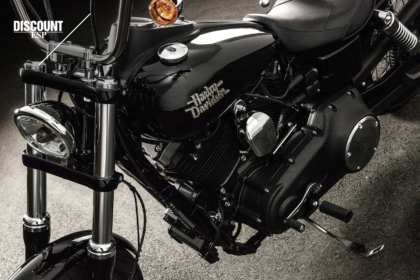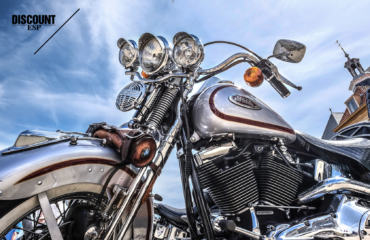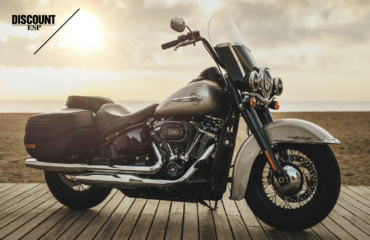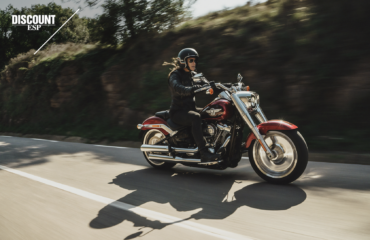
As the year winds down, the riding season will be nearing an end for many bikers in the north. For those die-hards, there’s plenty of advice about how to ride in frigid temperatures, though some of it sounds a little scary. But most people aren’t fans of black ice, cold wind, and snow.
If you fall in the latter category, you will want to winterize your motorcycle. This means storing it during the cold months—and then gleefully getting it ready to ride again at the first sign of warm weather. Here is Discount ESP’s quick and handy guide to preparing and storing your motorcycle for winter.
Tips to winterize your bike
- Fuel tank and carburetors. Fill the gas tank completely, and treat your gas with a stabilizer. Let it run for a few minutes so the product can thoroughly mix and run through the system. If your bike isn’t fuel injected, drain all the fuel from the carburetors. Failure to do so could clog the carbs and lead to an expensive repair bill in the spring.
- Battery: Your battery needs to be kept at 100% over the entire period of time you’re storing it. To do this, you’ll want to invest in a battery maintainer. There are two choices, either a trickle charger or a float charger.
- A trickle charger is dumb and will keep sending a low electrical current to the battery even after it’s fully charged.
- A float charger is smart and stops charging when the battery is at 100%. It then waits until the charge is low enough to send more electrical currents. The primary benefit of a battery minder is that you can set it and forget it. The trickle charger must be disconnected once the battery is fully charged, making it a pain for longer-term storage.
- Fluids: Replace all of your fluids. Yes, all. You don’t want contaminants floating around in your bike for several months. Make sure there’s enough antifreeze in your coolant system. Then change the dirty oil to prevent the corrosive carbon deposits it will produce during storage. While you’re at it, change the oil filter.
- Tires: Ensure your tires are inflated to the proper pressure and take measures to keep them from getting flat over winter. You can either rotate them once every four to six weeks or keep them off the ground with a motorcycle stand.
- Moving Parts: Clean and lubricate the chain drive and other moving parts, such as the brakes, pedals, and controls. You probably do this regularly throughout the riding season, but be especially thorough before storing your bike for winter.
- Protection: Plug the exhaust pipe to keep uninvited critters from living rent-free in your exhaust all winter. Then, clean your motorcycle thoroughly, invest in a high-quality protective bike cover, and store your bike where it won’t be exposed to the elements. If you absolutely must store it outside, secure it to protect it from theft. (But really, don’t store it outside.)
If it’s really too much trouble to winterize your motorcycle and get it ready every year in the spring, head south for the winter. We hear there are some great rallies down there.
For extra protection, get your bike covered by Discount ESP. Sign up today!





